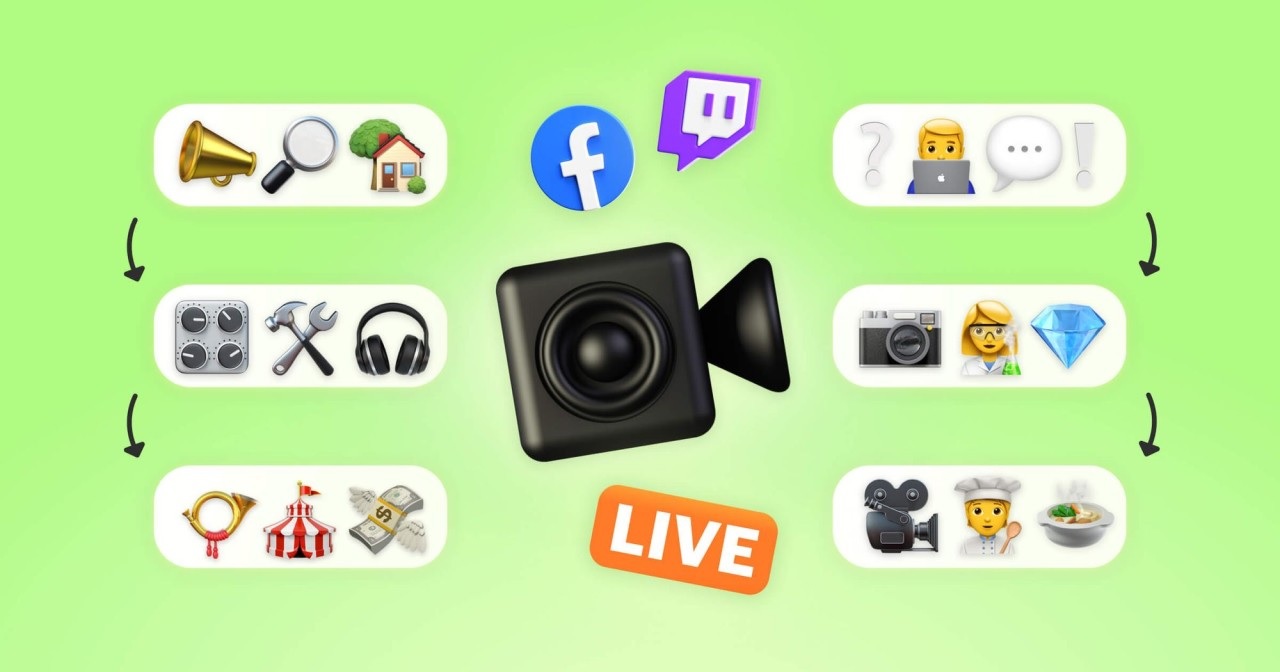Game streaming platforms have undergone a remarkable evolution, revolutionizing the gaming industry and captivating the attention of millions of players worldwide.
In this article, we will explore the fascinating world of game streaming systems and their profound impact on the gaming industry. We will delve into the overview of game streaming platforms, understanding what they are and how they function.
Furthermore, we will discuss the importance of game streaming in the gaming industry, highlighting how these platforms have transformed the way we play, watch, and engage with video games.
Early Beginnings of Game Streaming

In the fascinating world of gaming, the early beginnings of game streaming platforms laid the foundation for the revolution that would transform the way we play, watch, and engage with video games.
Game streaming systems, such as Twitch and YouTube Gaming, emerged as pioneers, offering gamers the opportunity to share their gameplay live over the internet. These platforms quickly gained popularity, attracting a growing community of both streamers and viewers.
Let’s dive and explore the exciting early days of game streaming, examining the emergence of these platforms, their impact on the gaming industry, and the subsequent evolution that would shape the future of game streaming platforms.
The Emergence of Twitch
In the realm of game streaming platforms, one name stands out prominently: Twitch. Twitch emerged as a pioneering platform that revolutionized the way gamers shared their gaming experiences with the world.
Founded in 2011, Twitch quickly gained popularity among gaming enthusiasts as a dedicated platform for streaming live gameplay. Its user-friendly interface and interactive chat feature provided a seamless experience for both streamers and viewers.
As a result, Twitch rapidly became the go-to platform for gamers looking to share their skills, entertain audiences, and build communities around their favorite games.
However, Twitch was not the only player in the game streaming landscape. Another major contender entered the scene, offering its unique features and benefits.
YouTube Gaming’s Entry into the Market
In 2015, YouTube, the renowned video-sharing platform, recognized the immense potential of game streaming and decided to venture into the domain with the launch of YouTube Gaming.
Leveraging its extensive user base and infrastructure, YouTube Gaming aimed to provide gamers with a seamless and integrated streaming experience. By creating a dedicated section for gaming content, YouTube Gaming allowed gamers to quickly discover and watch live streams, gameplay videos, and highlights.
This entry into the market intensified the competition among game streaming platforms and presented streamers with more options to showcase their talents to a wider audience.
While Twitch and YouTube Gaming dominated the game streaming landscape, other platforms also contributed to the early growth of this industry.
Other Early Players in Game Streaming
Alongside Twitch and YouTube Gaming, several other game streaming platforms emerged during this period. Platforms like Hitbox and Azubu aimed to carve their niche in the market by offering unique features and catering to specific gaming communities.
Although these platforms garnered a dedicated user base, they were unable to match the rapid growth and widespread adoption achieved by Twitch and YouTube Gaming.
The early beginnings of game streaming saw the emergence of Twitch as a dominant force, followed by YouTube Gaming’s entry into the market. Together, these platforms laid the foundation for the subsequent evolution and impact of game streaming in the gaming industry.
The Rise of Game Streaming Platforms

The rise of game streaming platforms has transformed the gaming landscape, captivating the attention of gamers worldwide and revolutionizing how we experience video games.
Game streaming systems, such as Twitch, YouTube Gaming, Mixer, and Facebook Gaming, have emerged as powerhouses in the gaming industry. These platforms provide a dedicated space for gamers to share their gameplay live with millions of viewers, fostering vibrant communities and interactive experiences.
Delve into the Impact of AR in Gaming as we explore the rapid rise of game streaming platforms, their profound influence on the gaming industry, and the thrilling opportunities they present to gamers and viewers alike.
Twitch’s Dominance and Growth
Among the game streaming networks, Twitch emerged as the undisputed leader, dominating the industry with its exponential growth and widespread popularity. Twitch’s intuitive user interface, interactive chat, and dedicated gaming community contributed to its success.
As more streamers flocked to Twitch, the platform’s viewer base expanded exponentially, making it the go-to destination for live game streaming. Twitch not only provided a platform for gamers to share their gameplay but also facilitated the growth of a vibrant community where viewers could interact with streamers and fellow gaming enthusiasts.
While Twitch continued to assert its dominance, YouTube Gaming, another major player in the game streaming arena, underwent its evolution.
YouTube Gaming’s Evolution
Following its entry into the game streaming market, YouTube Gaming underwent significant transformations to improve its streaming capabilities and compete with Twitch. YouTube Gaming integrated live streaming features directly into the platform, enabling streamers to reach their existing subscriber base effortlessly.
The platform also enhanced discoverability by curating gaming content and recommendations tailored to individual viewers’ preferences. Additionally, YouTube Gaming introduced various interactive features, such as Super Chat, allowing viewers to support their favorite streamers by purchasing highlighted chat messages.
As Twitch and YouTube Gaming battled for supremacy, Microsoft’s Mixer made a noteworthy entry, though its journey was short-lived.
Mixer’s Entry and Subsequent Shutdown
Microsoft’s Mixer entered the game streaming arena with a focus on interactivity and innovation. Mixer introduced features such as low-latency streaming and integrated interactive elements directly into the platform, offering viewers the ability to directly impact the gameplay of streamers.
Despite these unique features, Mixer struggled to compete with the established user bases of Twitch and YouTube Gaming. In a surprising turn of events, Microsoft announced the shutdown of Mixer in 2020, partnering with Facebook Gaming to transition its streamers and viewers to the Facebook Gaming platform.
In the wake of Mixer’s closure, another tech giant, Facebook, seized the opportunity to make its mark in the game streaming space.
Facebook Gaming’s Emergence
Facebook Gaming emerged as a strong contender in the game streaming industry. Leveraging its massive user base and existing social media infrastructure, Facebook Gaming attracted both established streamers and newcomers to its platform.
Facebook Gaming introduced features that encouraged interactivity and community engagement, such as live chat, reactions, and the ability to easily share streams across the Facebook ecosystem. The integration of game streaming with the existing social media platform offered a seamless experience for both streamers and viewers, further expanding the reach of game streaming.
With Twitch’s dominance, YouTube Gaming’s evolution, Mixer’s brief but impactful presence, and Facebook Gaming’s emergence, the game streaming landscape experienced significant shifts, shaping the future of the industry.
Technological Advances in Game Streaming

The world of gaming has been revolutionized by remarkable technological advances in game streaming networks. These platforms, such as Twitch, YouTube Gaming, Mixer, and Facebook Gaming, have leveraged cutting-edge technologies to enhance the gaming experience for both streamers and viewers.
From cloud gaming to low-latency streaming technology, these advancements have made gaming more accessible, interactive, and immersive than ever before.
Let’s explore the exciting world of technological advances in game streaming systems, delving into the impact they have had on the gaming industry and the future possibilities they hold for interactive entertainment.
Cloud Gaming and Its Impact
One of the significant technological advances revolutionizing game streaming networks is cloud gaming. Cloud gaming allows players to stream games directly from remote servers, eliminating the need for high-end gaming hardware.
This breakthrough has made gaming more accessible to a wider audience, as players no longer require powerful consoles or gaming PCs to enjoy the latest titles. With cloud gaming, games are processed and rendered on powerful servers, while players receive the video and audio output on their devices in real-time.
This technology has the potential to reshape the gaming industry, enabling gamers to enjoy high-quality gameplay on a range of devices, including smartphones, tablets, and low-end computers.
In addition to cloud gaming, another technological advancement that has greatly improved the game streaming experience is low-latency streaming technology.
Low-Latency Streaming Technology
Latency refers to the delay between a player’s input and the resulting action or feedback displayed on the screen. In the context of game streaming, minimizing latency is crucial for providing a seamless and responsive experience.
Low-latency streaming technology has significantly reduced the delay, creating a more immersive and interactive gaming experience for both streamers and viewers. By leveraging optimized streaming protocols and reducing network bottlenecks, game streaming networks have been able to minimize latency and deliver near-instantaneous responses to player inputs.
This advancement has made it possible for viewers to actively participate in live gameplay sessions, engaging with streamers and influencing the outcome of the game in real-time.
While cloud gaming and low-latency streaming technology have revolutionized game streaming, the role of high-speed internet cannot be understated.
The Role of High-Speed Internet
High-speed internet is a critical component in ensuring a smooth and uninterrupted game streaming experience. With the increasing demand for high-quality video and low-latency gameplay, a reliable and fast internet connection has become essential for both streamers and viewers.
Game streaming networks require significant bandwidth to transmit high-resolution video and audio data in real time. Additionally, stable internet connectivity is necessary to maintain a consistent and responsive streaming experience.
As internet infrastructure continues to improve worldwide, with the expansion of broadband and the deployment of faster connection technologies, more gamers, and viewers can access game streaming systems without experiencing lags, buffering, or other disruptions.
These technological advances in cloud gaming, low-latency streaming, and high-speed internet have collectively propelled game streaming platforms to new heights, transforming the way we play, watch, and engage with video games.
The Impact on the Gaming Industry

Game streaming systems have had a profound impact on the gaming industry, transforming the way we play, watch, and engage with video games.
Platforms like Twitch, YouTube Gaming, Mixer, and Facebook Gaming have revolutionized the dynamics of game marketing, creating new opportunities for content creators, boosting the eSports scene, and even influencing game development and design. These platforms have become a hub for gamers and viewers worldwide, fostering vibrant communities, and redefining the way games are experienced.
Here, we will explore the tremendous impact of game streaming networks on the gaming industry, unraveling the exciting changes and possibilities they have brought to the world of interactive entertainment.
Changing Dynamics of Game Marketing
Game streaming systems have revolutionized the way games are marketed to the masses. Traditionally, game marketing relied heavily on trailers, advertisements, and demos. However, with the rise of game streaming platforms, developers and publishers have embraced a new avenue for showcasing their games.
By collaborating with popular streamers, they can reach a vast and engaged audience. Streamers provide authentic, live gameplay experiences that generate excitement and curiosity among viewers.
This shift in game marketing has allowed for more interactive and immersive promotion, giving players a glimpse of actual gameplay and fostering a stronger connection between developers and the gaming community.
Alongside the changing dynamics of game marketing, game streaming systems have opened up new opportunities for content creators.
New Opportunities for Content Creators
Game streaming networks have provided aspiring content creators with a platform to showcase their talents and build a dedicated audience. Streamers can share their gameplay, provide commentary, and interact with viewers in real time.
This has led to the emergence of a new breed of entertainers and influencers within the gaming industry. Content creators can monetize their streams through sponsorships, donations, and advertising revenue.
The rise of game streaming systems has democratized the content creation landscape, allowing individuals with a passion for gaming to turn their hobby into a full-time career.
Game streaming platforms have also had a significant impact on the world of eSports.
eSports and Game Streaming
eSports, competitive gaming at a professional level, has experienced a tremendous boost from game streaming systems. These platforms provide a global stage for eSports events, allowing fans to watch tournaments and matches from the comfort of their homes.
Game streaming networks have made it easier for eSports organizations to reach a broader audience, attracting dedicated fans and newcomers to the competitive gaming scene. The ability to engage with live chats and interact with streamers during eSports events enhances the overall viewing experience and fosters a sense of community among fans.
In addition to changing marketing dynamics and the rise of eSports, game streaming platforms have influenced the very process of game development and design.
Shifts in Game Development and Design
Game streaming systems have compelled game developers to consider the streaming experience and viewer engagement during the development and design process. Developers now create games with features specifically tailored for streamers and viewers.
Streamer-friendly options, such as customizable overlays, integrated chat systems, and easily shareable gameplay clips, enhance the streaming experience and encourage streamers to showcase their games. Viewer interactivity features, like polls and in-stream challenges, enable viewers to actively participate and feel connected to the gameplay.
These shifts have led to the creation of games that are not only enjoyable to play but also entertaining to watch and engage with on game streaming networks.
The impact of game streaming systems on the gaming industry is undeniable, transforming the way games are marketed, providing new opportunities for content creators, boosting the eSports scene, and influencing game development and design.
Challenges and Concerns

While game streaming platforms have brought numerous benefits to the gaming industry, they also face several challenges and concerns that need to be addressed. These challenges encompass areas such as copyright and intellectual property issues, monetization, and revenue-sharing models, as well as trolls, toxicity, and moderation challenges.
As game streaming systems continue to grow in popularity, it is important to recognize and navigate these obstacles to ensure a safe, fair, and enjoyable environment for both streamers and viewers.
Now, we will delve into the challenges and concerns faced by game streaming networks, exploring how they impact the industry and the potential solutions that can be implemented.
Copyright and Intellectual Property Issues
With the growth of game streaming systems, copyright, and intellectual property concerns have become more prevalent. Streamers often broadcast gameplay that includes copyrighted content, such as music, images, or in-game assets. This raises legal questions about the use of copyrighted materials without proper authorization or licensing.
Game streaming systems and streamers must navigate these complex issues to ensure compliance with intellectual property laws and avoid potential legal consequences. Content creators are increasingly mindful of the need to obtain appropriate permissions or use licensed content to avoid copyright infringement claims.
In addition to copyright issues, monetization, and revenue-sharing models present challenges in the game streaming industry.
Monetization and Revenue-Sharing Models
While game streaming platforms offer opportunities for content creators to monetize their streams, determining fair revenue-sharing models can be a challenge. Streamers invest time and effort into creating engaging content that attracts viewers and generates revenue for the platform.
However, striking a balance between compensating streamers adequately and maintaining the financial sustainability of the platform can be complex. Platforms need to establish transparent and equitable monetization structures that incentivize content creators while supporting the platform’s infrastructure and continued growth.
Alongside copyright and revenue-sharing concerns, moderation challenges arise due to the nature of online communities.
Trolls, Toxicity, and Moderation Challenges
Game streaming networks, like any online community, are not immune to issues related to trolls, toxic behavior, and moderation challenges. As the popularity of game streaming systems increases, so does the risk of encountering individuals who engage in harassment, hate speech, or disruptive behavior.
Maintaining a positive and inclusive environment requires robust moderation tools and strategies to tackle these challenges effectively.
Streamers and platforms must prioritize community guidelines, implement proactive moderation measures, and empower users to report and address instances of harassment or toxicity. Striving for a safe and welcoming community is essential to ensure an enjoyable experience for all participants.
These challenges and concerns surrounding copyright, monetization, and moderation highlight the ongoing need for game streaming platforms to address complex issues and maintain a healthy ecosystem for creators and viewers.
The Future of Game Streaming Platforms

The future of game streaming networks holds immense potential for the gaming industry, promising exciting developments and new possibilities. As technology continues to advance, game streaming systems are poised to play an even more integral role in the world of interactive entertainment.
With the integration of augmented reality (AR) and virtual reality (VR), game streaming systems will offer more immersive and captivating gaming experiences. Integration with social media platforms will further enhance the connectivity and engagement of gamers and viewers.
Additionally, potential mergers and acquisitions may reshape the landscape of game streaming networks, while ongoing user experience improvements will ensure a seamless and enjoyable streaming experience for all.
Let’s dive and explore the fascinating future of game streaming systems, uncovering the innovations and advancements that lie ahead.
The Role of Augmented Reality (AR) and Virtual Reality (VR)
As game streaming platforms continue to evolve, the integration of augmented reality (AR) and virtual reality (VR) technologies holds tremendous potential. Experience the Virtual Gaming Revolution with AR and VR, immersing players in interactive virtual elements within the real world or fully virtual environments.
By incorporating AR and VR into game streaming systems, players can engage with games in unimaginable ways, blurring the boundaries between the virtual and physical worlds. This integration has the potential to revolutionize the way games are streamed, offering viewers and players a more captivating and interactive experience.
In addition to AR and VR, the integration of game-streaming networks with social media platforms is another trend to watch.
Integration with Social Media Platforms
Game streaming platforms are increasingly integrating with social media platforms to create a more seamless and connected experience for users. By bridging the gap between game streaming and social media, streamers and viewers can easily share their favorite gaming moments, engage with their communities, and expand their reach to a wider audience.
Social media integration allows for cross-platform sharing, simplified user authentication, and enhanced discoverability of gaming content. This integration not only promotes community building and interaction but also brings game streaming closer to the broader social media landscape.
Looking ahead, potential mergers and acquisitions could shape the landscape of game streaming networks.
Potential Mergers and Acquisitions
As the game streaming industry continues to mature, we may witness potential mergers and acquisitions among prominent platforms. Consolidation within the industry could lead to stronger and more comprehensive game streaming services.
Larger platforms may acquire smaller ones to expand their user base, technology, or exclusive content. These mergers and acquisitions have the potential to redefine the competitive landscape, shaping the future of game streaming platforms and their capabilities.
Finally, the future of game streaming systems will be marked by ongoing user experience improvements.
User Experience Improvements
Game streaming networks will continue to focus on enhancing the user experience for both streamers and viewers. This includes improving video and audio quality, reducing latency, and optimizing streaming stability. Streamers may benefit from more advanced broadcasting tools, customizable overlays, and seamless integration with third-party software and hardware.
Viewers can expect improved interactive features, easier navigation, and personalized recommendations based on their interests. Ongoing user experience improvements will further solidify game streaming systems as a preferred medium for gaming entertainment.
As game streaming networks progress, the integration of AR and VR, social media integration, potential mergers, and ongoing user experience enhancements will shape the future landscape of the industry.
Conclusion
In conclusion, the evolution of game streaming platforms has had a profound impact on the gaming industry, transforming the way we play, watch, and engage with video games.
From the early beginnings of Twitch and YouTube Gaming to the rise of Facebook Gaming, these platforms have created new opportunities for gamers, content creators, and game developers. Technological advancements, such as cloud gaming and low-latency streaming, have made gaming more accessible and immersive than ever before.
Moreover, game streaming systems have revolutionized game marketing, boosted the eSports scene, and influenced game development and design. As we look to the future, it is clear that game-streaming platforms will continue to shape the landscape of interactive entertainment.
So, share this amazing information with your friends, and don’t forget to leave your valuable feedback in the comments below. Let’s continue to explore and embrace the fascinating world of game streaming platforms together.


























